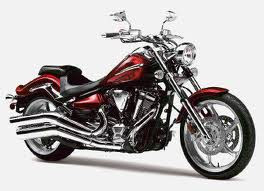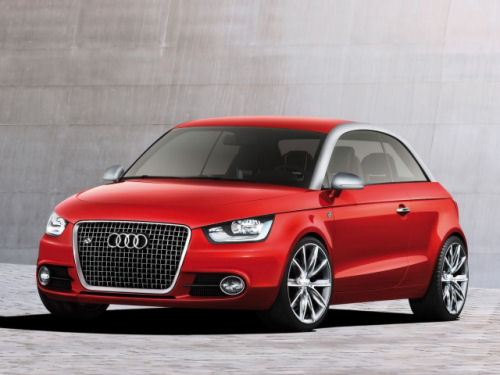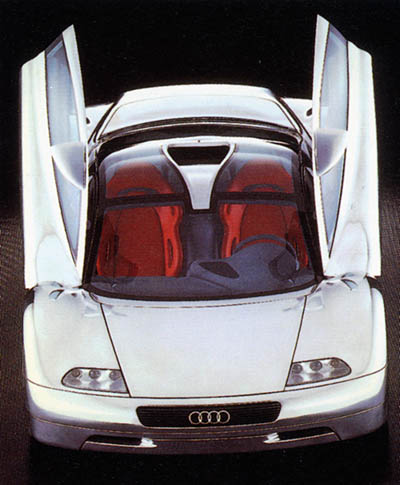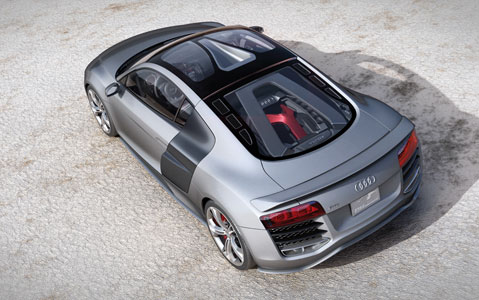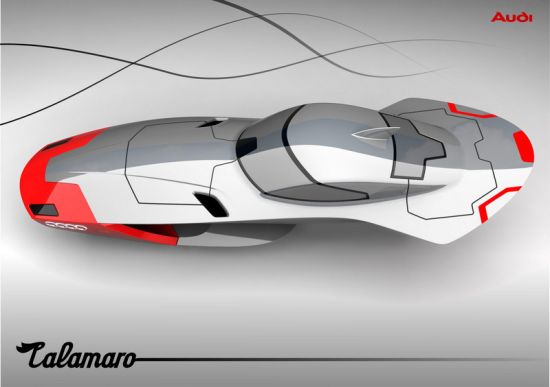Spesifikasi harga yamaha new scorpio-PT Yamaha Motor Kencana Indonesia or YMKI continue to maintain its superiority as ruler of the sports segment with a barrage of bullets fired into the national market mainstay. After V-Ixion and Byson, Yamaha launched the New Scorpio Z at Cafe La Bride, Ancol, North Jakarta, today (09/21/2010).
Although the facelift, New Scorpio Z performed with fresh faces, especially on the main lights (headlight) with a hood and systems that adopt the style moge multireflektor Yamaha FZ8. Fuel tanks are also larger and equipped with fins (Shroud) with a lid that is designed motor sport-style blend.
Another change visible on the stern, from the rear lights (tail light) and a more sporty exhaust and panel indicators, such as tachometers and a new speedometer.
However, the New Scorpio Z machine was not changed from previous models. Yamaha 223 cc engines still rely on four-stroke SOHC helpless aircooler 18.2 PS at 8000 rpm with peak torque up to 1.72 kgm at 6500 rpm.
Marketing Director Vincent YMKI Mulyono said, this latest product already booked all over dealers in Indonesia. However, delivery of new units can be carried out in October.
|
|
|---|
|
|
|---|
Tuesday, 30 November 2010
MODIFICATION YAMAHA NEW SCORPIO 2010
MODIFICATION YAMAHA NEW SCORPIO 2010
Monday, 29 November 2010
2011 Honda Fit EV Concept electric car
 The Fit EV is designed to meet the daily driving needs of the average metropolitan commuter and utilizes the same 5-passenger layout found in the popular Fit hatchback. When the Fit EV production model is introduced, it will be powered by a lithium-ion battery and coaxial electric motor.
The Fit EV is designed to meet the daily driving needs of the average metropolitan commuter and utilizes the same 5-passenger layout found in the popular Fit hatchback. When the Fit EV production model is introduced, it will be powered by a lithium-ion battery and coaxial electric motor.The high-density motor, derived from the FCX Clarity fuel cell electric vehicle, delivers excellent efficiency and power while remaining quiet at high speeds.
The Fit EV will have a top speed of 90 mph.
The Fit EV will achieve an estimated 100-mile driving range per charge using the US EPA LA4* city cycle (70 miles when applying EPA’s adjustment factor). Driving range can be maximized by use of an innovative 3-mode electric drive system, adapted from the 2011 Honda CR-Z sport hybrid. The system allows the driver to select between Econ, Normal, and Sport to instantly and seamlessly change the driving experience to maximize efficiency or improve acceleration. While in Econ mode, practical driving range can increase by as much as 17 percent, compared to driving in Normal mode, and up to 25 percent compared to driving in Sport mode. Acceleration improves significantly when in Sport mode, generating performance similar to a vehicle equipped with a 2.0-liter gasoline engine.
In addition to the 3-mode E-Drive system, the Fit EV will include several interactive coaching systems to assist the driver in maximizing battery range.
A special meter display advises the driver when to shut off air conditioning and other accessories to conserve battery power.
To help the driver deal with the electric vehicle ownership experience, the Fit EV will have a standard connectivity system that allows the driver to stay connected through a smartphone and personal computer, or the Honda-exclusive interactive remote, while away from the vehicle. The pocket-friendly, interactive remote provides connectivity to the vehicle without the need for an internet connection or mobile phone signal. Through the connectivity system, drivers will be able to remotely view the vehicle’s state of charge, initiate charging and activate the air conditioning, even while connected to the grid, to reduce the drain on the battery at start-up. The mobile application and website also offers the ability to set charging notifications and alerts to optimize utility rates, and provides 24-hour roadside assistance, along with a public charging station locator. The Fit EV will come equipped with a standard Honda Satellite Linked Navigation System™ that includes a public charging-station locator capability.
 The Fit EV is designed to be easy and convenient to charge. Battery recharging can be accomplished in less than 12 hours when using a conventional 120-volt outlet, and less than six hours when using a 240-volt outlet.
The Fit EV is designed to be easy and convenient to charge. Battery recharging can be accomplished in less than 12 hours when using a conventional 120-volt outlet, and less than six hours when using a 240-volt outlet.The Fit EV Concept displayed at the Los Angeles Auto Show features an exclusive Deep Clear Blue Pearl exterior color and distinctive five-spoke aluminum-alloy wheels with blue inserts. The Concept has unique LED headlights, a chrome front fascia, aerodynamic bumper, clear LED taillights and EV decals. Inside, the Fit EV Concept is outfitted in an eco-friendly gray bio-fabric on the seating surfaces.
Displayed alongside the Fit EV Concept at the show is a prototype Honda charging stand. To begin charging, the driver swipes a card in front of the screen and then connects the charger to the vehicle. The Honda charging stand provides a glimpse at the future of an electric-charging infrastructure that is easy to use and intuitive for consumers.
Displayed alongside the Fit EV Concept at the show is a prototype Honda charging stand. To begin charging, the driver swipes a card in front of the screen and then connects the charger to the vehicle. The Honda charging stand provides a glimpse at the future of an electric-charging infrastructure that is easy to use and intuitive for consumers.
2012 Ferrari 612 Scaglietti
 The history of the 612 Scaglietti started in 2004 when Ferrari chose it as a successor for the smaller 456 M. It was designed as a 4 seater gran tourer with adequate space in the rear seats for adults. But, if we’re going to be honest, the 612 Scaglietti features the most out-dated design in all of the current Ferrari line-up.
The history of the 612 Scaglietti started in 2004 when Ferrari chose it as a successor for the smaller 456 M. It was designed as a 4 seater gran tourer with adequate space in the rear seats for adults. But, if we’re going to be honest, the 612 Scaglietti features the most out-dated design in all of the current Ferrari line-up.Thankfully, Ferrariis coming to the rescue with a successor to the Scaglietti. This new model will be unveiled next March at the Geneva Motor Show with sales beginning in the summer of 2011. Prices are said to be in the 300,000 euro area.
Ferrari has already confirmed that the next 612 model will feature lots of modifications, including a gasoline-hybrid technology which is a system Ferrari developed from the KERS system it currently uses in Formula One race cars. This system was already previewed by the 599 GTB Fiorano HY-KERS concept unveiled earlier this year.
Exterior and Interior
While the prototypes caught testing all over the world looked almost identical to the current 612 Scaglietti, the next model will adopt a totally new look. It will combine design elements from both the 458 Italia and the Vettura Laboratorio HY-KERS. The sports car will get a strong front, curved hood, and wider wheelbase.
The Engine
 The current 612 Scaglietti is powered by a 5,748 cc V12 engine that delivers 530 HP and 588 Nm of torque. But the next model will adopt a hybrid drive train that will combine a V12 front engine that delivers a total of 550 HP with a 100-HP electric motor at the rear. This new system will help improve fuel consumption by at least 35%.
The current 612 Scaglietti is powered by a 5,748 cc V12 engine that delivers 530 HP and 588 Nm of torque. But the next model will adopt a hybrid drive train that will combine a V12 front engine that delivers a total of 550 HP with a 100-HP electric motor at the rear. This new system will help improve fuel consumption by at least 35%.We expect to see the same dual-clutch 7-speed F1 transmission as in the Vettura Laboratorio HY-KERS concept.
The Competition
The next Ferrari 612 Scaglietti takes on models like the Aston Martin DBS, which is also about to enter its second generation. The new Bentley Continental GT will also have a few reasons to fear the 612.
When Can I Get One?
The new Ferrari 612 Scaglietti will make its world debut in March 2011 at the Geneva Motor Show. Sales will begin in the summer of 2011; expect a price of around 300,000 euro, or $410,00 at the current exchange rates.
Sunday, 28 November 2010
2012 SSC Ultimate Aero II
Exterior Design
The outgoing Ultimate Aero was very generic in its looks. The body, like the rest of the car, was designed by company owner Jerod Shelby (no relation to muscle car legend Carroll Shelby). He admits that the need for slippery aerodynamics governed the outcome of the final product and being an engineer by trade, design wasn’t his greatest strength. Enter Italian American designer Jason Castriota who, in the beginning, had reservations about taking on the project. We couldn’t really blame him after looking at his impressive resume. He has penned cars for the very best in the industry: Ferrari, Pininfarina, Rolls Royce, and Bertone to name but a few. The last thing his career needed was to design a car destined for failure for a small company with more hopes than money or brains. After a visiting the facility and getting to know the staff and more importantly, their ideals and the car, he took the plunge and created what you see before you.
The outcome is breathtaking, especially once you peel the body work away to reveal how technically challenging it was to overcome the dreaded forces of nature at 200+mph, whilst packaging the required mechanical components. It is the ultimate example of form meeting function, to create a harmonious whole. We like the black teardrop shaped canopy that sits on top of the white exterior, creating a stunning contrast of power and beauty. The shape is classic and pivotal, and has a very low drag co-efficient. The car features dihedral stabilizers or wings that have been borrowed from the realm of aviation. The term “flying buttress” might be construed as a being a bit naughty, but they are actually wings that help support the structure of the car. In this case, they are those bits on the side of the SSC Aero II, which channel air towards the engine intakes – a Castriota design signature.
The front looks intimidating and purposeful with its low slung nose and carbon fiber headlights. Looking closely, you’ll notice venting for the carbon brakes and a cohesive front splitter that generates enough downforce to keep the nose planted at speed. There is no hood or luggage space, or any kind of compromise with this car. The side profile is sleek and sexy – there are no door handles or side repeaters and the car barely stands over a meter tall. Massive lower recesses house air intakes in front of the rear wheel arches and feed the ravenous engine and cooling radiators with much-needed cold air, while doing its bit to balance the look. It checks all the hypercar boxes and then some. Elements of the first Aero are maintained, most notably the party piece doors and simple-spoked wheel design. The latter being the first ever one piece carbon fiber wheels ever fitted to a car. They are products of Australian company, Carbon Revolution, and the 19" fronts weigh just 5.8kg each.
The entire body and chassis, save for front and rear impact zones, are all made from carbon fiber - further emphasizing lightness as key. This is not necessarily for top speed, but more for everyday driving and handling. All mid-engined cars require apertures in the bodywork to help get rid of heat – they usually take the form of slats or louvers but since this car is anything but, it features circular cut outs in various diameters to expel heat and generate pub controversy. Moving to the other-worldly rear, dynamics take over, with aesthetics playing second fiddle. The entire under floor of the car is sealed leading up to the rear which functions as the mother of all diffusers, complete with F1-style exhaust. From this angle, it does bear slight resemblance to an R8 and by slight, we mean slight – the proportions and shapes are similar. Between the rear stabilizers is a hydraulically operated air brake – ala Bugatti Veyron and Merc SLR that comes into play at higher-than-allowed speeds. Dimension wise, the Aero II is slightly more narrow than before to comply with FIA GT regulations, should they decide to race it.
Interior
The interior remains a bit of a mystery – probably because it isn’t 100% finished yet - but we could have a guess as to what to expect. There will be room for two with all the necessary creature comforts like seatbelts and aircon. We wouldn’t bet on heated and electric massaging seats just yet. Judging from the old model, whose interior was pretty sloppy, the new car’s interior has to be better and get the basics right. We believe the design will be based around a large central LCD display and have better quality finishes – after all this car does cost a smidgen under $1 million.
Performance
Do you really have to ask? The numbers on paper are staggering enough – even before getting to actual performance times and stats. The proposed record breaker is powered by a quad-cam, twin-turbo V8 displacing 6.8 liters. The engine, like all the other mechanical parts, are all developed in-house by SSC themselves. The new powerplant shares a lot with the old 6.2 liter item – the block and its innards are the same design, so are the dimensions and location of its 10 radiators. Changes come in the form of a four-valves-per-cylinder overhead cam (OHC) setup as opposed to push rods and new SSC spec turbochargers. The new setup is good for a colossal 1350HP and will rev to 9000RPM! Zero to 62mph will arrive in around 2.8 seconds and SSC claims a top speed of, wait for it, 275mph! The in gear acceleration figures are not known as of yet, but you can be sure they will be absolutely mind blowing. Thank goodness the new car will feature traction control, ABS with servo assistance, and Brembo carbon ceramic stoppers. We can’t even begin to imagine letting that kind of power loose on public roads without fear of being apprehended by the long arm of the law while experiencing acceleration that will rip your face off. This thing should sound the way it goes – an all turbo whoosh and snarling, angry V8.
Because it’s RWD rather than 4WD like our friend the Veyron, it’s lighter...much lighter. The Aero II weighs 1200kgs, a full 638kgs lighter than the comparatively pudgy Bugatti – and it produces more power. You don’t have to be a rocket scientist to figure out that the power to weight ratio is over 1000HP per tonne, putting it in the league of the Caparo T1. Where the Bugatti is luxurious, refined, and civilized to drive, the Aero II is raucous, unforgiving, and about as scary as a getting a shave from Edward Scissorhands.
Suspension remains as the same coilover setup and so does the triple plate carbon clutch. Whether it’s as good at going round corners as it is in a straight line still remains to be seen. One thing is for certain though, it will set your trousers on fire every time you use the pedal on the right.
Competition
In short, there is none other competition except for the Veyron SS and it costs $2.4 million, more than twice the price of the $970,000 Aero II. You could also buy a Koenigsegg Agera, but the price is unconfirmed and so is the top speed. The cars should be closely pegged, but we guess it depends on personal preference and if you’re into the whole “mine’s bigger than yours” thing. Let’s hope the Aero II will not squeak, rattle, or fall apart like so many other cars made by small firms in small numbers. The first cars will be delivered to their proud new owners around the last quarter of 2011.
Only time will tell whether SSC will bring the top speed crown back to the US.
Porsche 911
EXTERIOR AND INTERIOR
Among the additions Vorsteiner installed on the 911’s exterior include a VRT front bumper cover with spoiler attachment carbon fiber, a VRT rear bumper with diffuser carbon fiber for the LED tail lights, a VRT intercooler shrouds carbon fiber, a VRT aero engine lid with wing blade carbon fiber, a VRT sport roof replacement carbon fiber, an upgraded Porsche LED taillights, carbon fiber side mirror housings, and a custom clear bra protection on a number of parts including the bumper, hood, fenders, door and mirrors.
In the interior, there’s plenty more Vorsteiner additions, including a thicker sport steering wheel with red deviated stitching, sport aluminum pedals with heel toe extensions, sport aluminum floor boards, carbon fiber on the center console, rear ash tray, and seat belt trim, and plenty of Alcantara to go around including in the set inserts, as well as embossed in the arm rest, chrono pod, and hand brake with red deviated stitching. Finally, there are also Volrsteiner-embroidered floor mats with red piping in the front and rear.
PERFORMANCE
The Vorsteiner VRT 911 Coupe is powered by a horizontally opposed 3.6-liter V6 engine that produces 460 horsepower and 480 lb/ft of torque mated to a six-speed manual transmission with dual mass flywheel.
To further boost its performance, Vorsteiner also included a stainless steel exhaust system, performance intercoolers, a GIAC custom sport tuning programming & device switch unit,
and a KW hydraulic lift coilover system that raises the 911’s front end by one inch.
PRICING
The standard retail price for a newly outfitted 911 Turbo Coupe goes for $132,705, but seeing as this car already has some mileage to it – about 8,500 miles – the asking price has been dropped to $99,500. It might still be a high asking price for a slightly used Vorsteiner VRT 911 Turbo Coupe, although if you really think about it, all the modifications total to a price tag of $57,815.
2007 Porsche 911 Turbo Competition
A number of tuning firms have already put the 911 under the proverbial tuning phase and there always seems to be a healthy competition from tuning firms to develop the most awesome 911 on the street. Firms like 9ff, TechArt, Sportec, and even Misha, have taken their turns upping the ante on the 911. There are differences in power, of course, with 9ff arguably producing the most powerful modded Porsches on the planet. All this, of course, still remains a subjective matter depending on what your preferences are. If you’re looking for a performance upgrade, 9ff is a good one to consider. If you’re looking for styling upgrades, Misha’s work with the 911 Turbo is a work of art. And if you’re looking for the whole package, Vorsteiner’s VRT 911 Turbo Coupe is about as good a modded 911 as you can find.
2007 Porsche 911 Turbo Coupe by Vorsteiner
The Porsche 911 is a favorite among auto tuners for a number of reasons. First, it’s fast. Second, it’s fast. And third, well, it’s fast. Apart from being fast, the 911 has and will always be Porsche’s signature sports car and fans of the brand always seem to have an insatiable appetite for the 911, especially when it’s been given an aftermarket treatment.
German firm, Vorsteiner, knows the Porsche and the 911 all too well, having done a number of aftermarket projects on the brand and the model in the past. This particular project is a 2007 model that is being sold with a pretty generous discount. We’re not going to reveal how much the price is until after the jump, but if you’re looking for a tuned-up Porsche done by an authority in aftermarket projects for the Stuttgart brand, you won’t find anybody else better than Vorsteiner.
German firm, Vorsteiner, knows the Porsche and the 911 all too well, having done a number of aftermarket projects on the brand and the model in the past. This particular project is a 2007 model that is being sold with a pretty generous discount. We’re not going to reveal how much the price is until after the jump, but if you’re looking for a tuned-up Porsche done by an authority in aftermarket projects for the Stuttgart brand, you won’t find anybody else better than Vorsteiner.
Friday, 26 November 2010
Yamaha Raider S Cruiser
Yamaha Raider S Cruiser
new 2010 Yamaha Raider S before purchasing this Cruiser bicycle. They have all the information you need including the manufacturer suggested retail cost, which starts from $14,790 MSRP that will give you the negotiating edge when visiting the dealership. The 2010 Raider S is made in Japan. Yamaha first introduced the Raider model in 2008. With front Dual Hydraulic Disc brakes that will securely cease this Raider S motorbike on demand. It comes standard with a 1854 cc V Twin engine, as well as a 5 speed transmission. Compare the Yamaha Raider S prices, pics, OEM accessories, MPG, and complete specifications of the engine, suspension, brakes, wheels and tires, transmission, seats, bags, and more to other submodels.
Labels:
Yamaha Raider S Cruiser
Tuesday, 23 November 2010
Audi Le Mans Quattro Gallery


the production version made its debut at the Paris Motor Show in the guise of the new Audi R8 mid-engine sports model. Audi has incorporated the name and the genes of the five-time Le Mans winner, the Audi R8, into a spectacular sports car.The R8 combines Audi's experience gained from numerous motor sport triumphs with groundbreaking design and the acknowledged technological expertise of the brand.
The design of the strikingly three-dimensional main headlights, using LED technology, is particularly eye-catching. At 7,800 rpm the 4.2-litre engine delivers 309 kW (420 bhp) of power output. The performance figures are equally impressive: the R8 accelerates from a standstill to 100 km/h in 4.6 seconds and reaches a top speed of 301 km/h. Priced at $ 80,000 - $ 110,000, the Audi R8 will be available to order from 28 September 2006; first deliveries will be made in the first half of 2007.
The design of the strikingly three-dimensional main headlights, using LED technology, is particularly eye-catching. At 7,800 rpm the 4.2-litre engine delivers 309 kW (420 bhp) of power output. The performance figures are equally impressive: the R8 accelerates from a standstill to 100 km/h in 4.6 seconds and reaches a top speed of 301 km/h. Priced at $ 80,000 - $ 110,000, the Audi R8 will be available to order from 28 September 2006; first deliveries will be made in the first half of 2007.
Labels:
Audi Le Mans Quattro Gallery
Monday, 22 November 2010
Running costs and Maintenance of electric cars
This can be attributed most of the costs of operating an electric car for maintenance and replacement of the battery because the electric car only about 5 moving parts in the engine, compared with gasoline-powered vehicle that contains hundreds of spare parts in the engine, internal combustion electric cars and batteries expensive that must be replaced, but otherwise incur maintenance costs very low .. Especially in the case of the designs of Li current list.
To calculate the cost per kilometer of electric cars and so it is necessary to assign monetary value of the resulting wear on the battery. This can be difficult due to the fact that it will have the capacity of a little less each time they are charged and this is only to be at the end of his life when he decides his performance that he is no longer acceptable. Until then, the 'end of life battery is not completely worthless as it can be intentional or recycled or used as a reserve.
Since the battery monitor from many individual cells that do not necessarily wear evenly periodically replace the worst of these can be set to keep the car.
It is expected that the car Tesla battery pack is too large to the last seven years with exemplary leadership and the cost of U.S. $ 12,000 when the day before the purchase. Driving 40 miles (64 kilometers) per day for seven years or 102,200 miles (164,500 km) leads to battery consumption, cost the United States $ 0.1174 for every 1 mile (1.6 km) or the United States $ 4.70 for each 40 miles (64 km). The company provides the best place to another compared to the costs it expects to meet its contractual obligations to deliver the batteries as well as clean electricity to recharge the batteries at a total cost of $ 0.08 per 1 mile (1.6 km) in 2010, the United States $ 0.04 per kilometer by 2015 and U.S. United $ 0.02 per kilometer by 2020. 40 miles (64 km) of driving the United States will cost $ 3.20 at the beginning and the fall more than once for up to $ 0.80.
In 2010 the U.S. government estimated that the battery with 100 miles (160 km) range will cost about U.S. $ 33,000. There is still concern about the durability and longevity of the battery.
April estimated the cost of coca will be operating 5 Year U.S. $ 1.800 compared to U.S. $ 6,000 car for gasoline. The documentary film Who Killed the Electric Car? A comparison between the parts that require replacement in gasoline powered cars and EV1s, with garages stating that they provide for electric cars in every 5000 miles (8000 km), and rotate the tires and fill the windshield washer fluid and bring them back again.
Sunday, 21 November 2010
Audi Calamaro Concept


It’s beyond what we’re used to calling a concept car. Audi has come up with a flying car. The futuristic vision appeals to all science fiction fans as it has no wheels but I’m not that sure that this concept will ever become a reality because it is not a practical car.
Labels:
Audi Calamaro Concept
Subscribe to:
Posts (Atom)





















